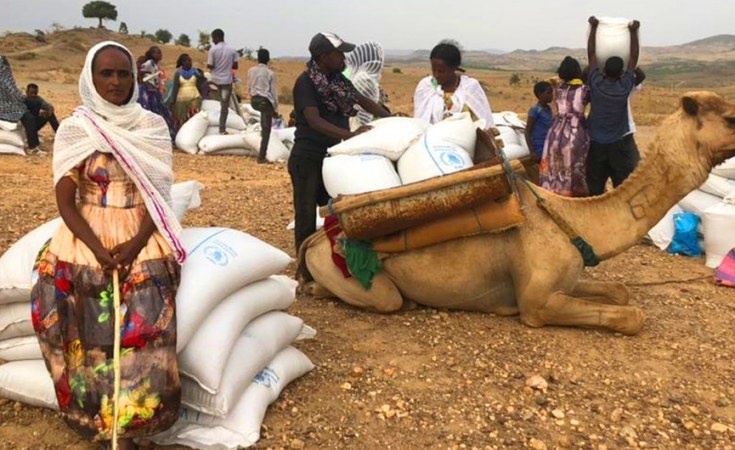One of the worst food shortages to have hit Ethiopia in the past fifty years has forced the authorities in the northern Tigray, Amhara and Afar regions as well as the federal government to sound the alarm. Millions of citizens residing in these regions are facing the prospect of acute hunger and require emergency food assistance. The famine-like condition prevailing in large swathes of the regions has led to the death of hundreds of people and tens of thousands of livestock. In addition, many have been uprooted from their homes in search of food. Although the administrations of the three regions, the relevant agencies of the federal government as well as international donors and humanitarian partners have exerted concerted efforts to support those in need, the response so far has fallen woefully short of what is required.
The specter of a devastating famine and death in northern Ethiopia has complex and interconnected causes that have led to widespread food insecurity and malnutrition. Understanding these causes is crucial for crafting an effective response that addresses both the immediate crisis and the underlying issues. One of the primary causes of the impending famine is climate-related. The country has experienced recurrent droughts, which have severely impacted agricultural productivity. In many parts of Ethiopia, erratic and insufficient rainfall has led to crop failures, loss of livestock, and dwindling food supplies. This in turn has left many communities without enough food to fend for themselves.
Another significant factor contributing to the famine is conflict and displacement. Ethiopia has been plagued by internal conflicts, especially the northern Tigray and Amhara regions, which have led to widespread displacement of people and disrupted food production and distribution systems. The resulting instability has exacerbated the already precarious food situation, leaving helpless populations even more at risk. Furthermore, poverty and economic hardship have played a major role in perpetuating food insecurity in Ethiopia. The vast majority of the country's population lives below the poverty line and lacks access to basic necessities like food. High levels of unemployment, limited access to education, and inadequate social safety nets have contributed to a cycle of vulnerability and deprivation, particularly in rural areas. In addition, systemic issues such as inadequate road and transportation infrastructure have hampered the efficient delivery of food aid and relief supplies to affected regions. This has made it difficult for humanitarian organizations to reach those in need and has further compounded the severity of the famine.
Averting the threat of starvation hovering over millions of compatriots in Tigray, Amhara and Afar rests on a comprehensive approach that addresses both the immediate humanitarian needs and the underlying causes of the crisis. There are some key steps that can be taken in this regard. Immediate efforts must focus on providing food aid to those most at risk. This includes delivering emergency food supplies to vulnerable populations, especially in hard-to-reach areas. Coordination among international relief agencies, local governments, and community organizations is essential to ensure that aid reaches those most in need.
The long-term solutions to the perpetual food crisis in Ethiopia, however, are structural. First and foremost, efforts to address the root causes of conflict and displacement are critical for stabilizing affected regions and allowing communities to rebuild their livelihoods. Promoting reconciliation and ensuring the protection of civilians from violence and displacement are vital towards this end. Efforts aimed at building resilience to climate change, namely promoting climate-smart agriculture, expanding access to climate information and early warning systems, and integrating climate resilience into development planning are also important. Moreover, tackling poverty and economic inequality through the creation of opportunities for sustainable livelihoods, promoting access to education and healthcare, and strengthening social safety nets for the most vulnerable populations are essential to improving the nation's food security. Improving transportation networks, storage facilities, and market access can further go some way to enhancing the efficiency of food distribution and facilitating access to essential goods and services in remote areas, helping achieve food security.
The acute food shortage presently besetting northern Ethiopia and other pocket areas in the country is a perennial and multifaceted crisis with deep-rooted causes that require a coordinated and sustained response. By addressing the immediate humanitarian needs while also tackling the underlying issues of climate change, conflict, poverty, and infrastructure, it is possible to mitigate the impact of the looming famine and build resilience for the future. While international cooperation is essential to successfully address this urgent humanitarian crisis, the level of support demonstrated by the likes of the U.N., donor governments and aid organizations leaves a lot to be desired. Unless all stakeholders mount a massive campaign to mobilize all the resources needed to respond effectively to the severe drought, the ensuing consequences are bound to be catastrophic for everyone.


